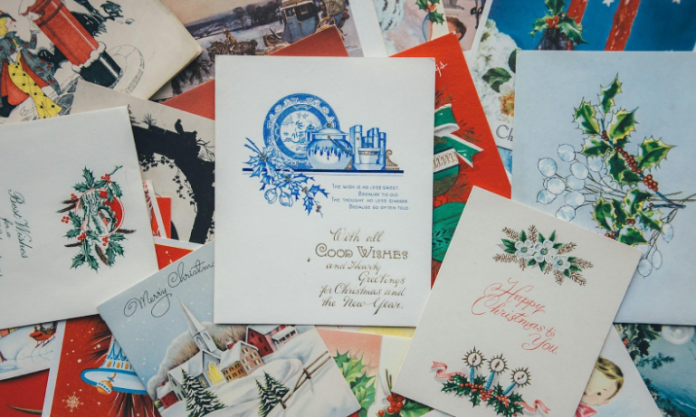Christmas cards have long held a cherished place in holiday traditions, symbolising the joy of connection and the spirit of giving. First introduced in the mid-19th century, these cards became an integral part of Australian holiday customs, offering a heartfelt way to reach loved ones. Over the decades, Christmas cards evolved, showcasing elaborate designs and sentimental messages. Today, as technology reshapes how we celebrate, digital Christmas cards have emerged as a sustainable, convenient alternative. This shift highlights a fascinating journey from traditional paper to innovative digital platforms.
The Origin of Christmas Cards
The story of Christmas cards began in 1843 when Sir Henry Cole, a British civil servant, commissioned the first commercial card. Decorated with an illustration of a family celebrating together, it encapsulated the festive spirit. This idea quickly gained traction, becoming a beloved tradition across the Commonwealth. Early cards often featured religious imagery or Victorian designs, appealing to a deeply sentimental audience.
In Australia, Christmas cards adapted to local culture, often showcasing native flora, fauna, and summer themes, reflecting the unique Aussie holiday experience. Despite being simple by today’s standards, these early cards were cherished keepsakes, signifying thoughtfulness and goodwill. Their popularity paved the way for mass production, making it easier for people to share joy and connection, even over great distances.
The Era of Traditional Paper Cards
Throughout the 20th century, paper Christmas cards flourished, becoming an integral part of holiday preparations. Families would gather to write personalised notes, sealing their warm wishes into envelopes adorned with festive stamps. These cards were not just about the message; they represented the time and effort spent, a tangible token of care during the holiday season.
Many cards highlighted the country’s unique summer Christmas, featuring beaches, koalas in Santa hats, and barbeques, offering a playful twist to traditional themes. The tactile nature of paper cards, combined with their vivid designs, made them cherished mementos displayed proudly in homes.
However, the rising costs of postage and printing, coupled with environmental concerns, began to influence consumer habits. People started exploring more cost-effective and eco-friendly ways to stay connected during the holidays, setting the stage for the digital revolution.
The Shift Towards Digital Christmas Cards
As technology advanced, Christmas cards embraced the digital realm, with email and e-cards gaining significant popularity. The global digital greeting card market, valued at over $1.2 billion in 2020, continues to grow as convenience and immediacy take priority in modern lifestyles. These cards appeal to tech-savvy users by offering customisable multimedia elements like music, animations, and photos, enhancing the personal touch.
Digital cards also address environmental concerns, helping reduce the billions of paper cards sent annually and their associated carbon footprints. Social media platforms have further transformed this tradition, enabling public holiday greetings while maintaining the charm of personalised digital cards.
Group Digital Cards: The Future of Festive Greetings
Group digital cards represent the latest innovation in Christmas greetings. Platforms like GroupTogether make it simple to collaborate on a shared card, allowing multiple contributors to add personalised messages and photos. This feature is particularly valuable for workplaces, schools, and large families, where coordinating individual messages in a single card amplifies the joy of connection.
People have embraced group digital cards for their practicality and creativity. These Christmas cards cater to the diverse needs of modern celebrations, offering customisation options like themed templates, photo uploads, and even video messages. They also align with the growing awareness of environmental sustainability, as they eliminate the need for physical materials while still preserving the heartfelt intent behind the gesture.
Group digital cards bring people together, fostering a sense of community and shared joy, even in challenging times. They’re a testament to how technology can enhance traditions without compromising their emotional significance.
Combining Tradition and Technology
Digital Christmas cards successfully blend the nostalgia of traditional greetings with the advantages of modern technology. Platforms now enable users to include multimedia elements like personalised videos, animations, and interactive designs, elevating the experience beyond what paper cards can offer.
The evolution of Christmas cards exemplifies how traditions can adapt and thrive in the digital age. Whether through a digital card or a group effort, the essence of these greetings remains unchanged: spreading joy, connection, and love during the festive season.
Final Thoughts
Christmas cards, whether paper or digital, have always been about heartfelt connections. The journey from Victorian-era designs to today’s dynamic digital cards showcases the adaptability of traditions in a changing world. Australians, with their unique holiday culture, continue to find ways to celebrate meaningfully while embracing eco-friendly, innovative solutions. This festive season, consider exploring digital group cards to create lasting memories while staying true to the spirit of Christmas.


